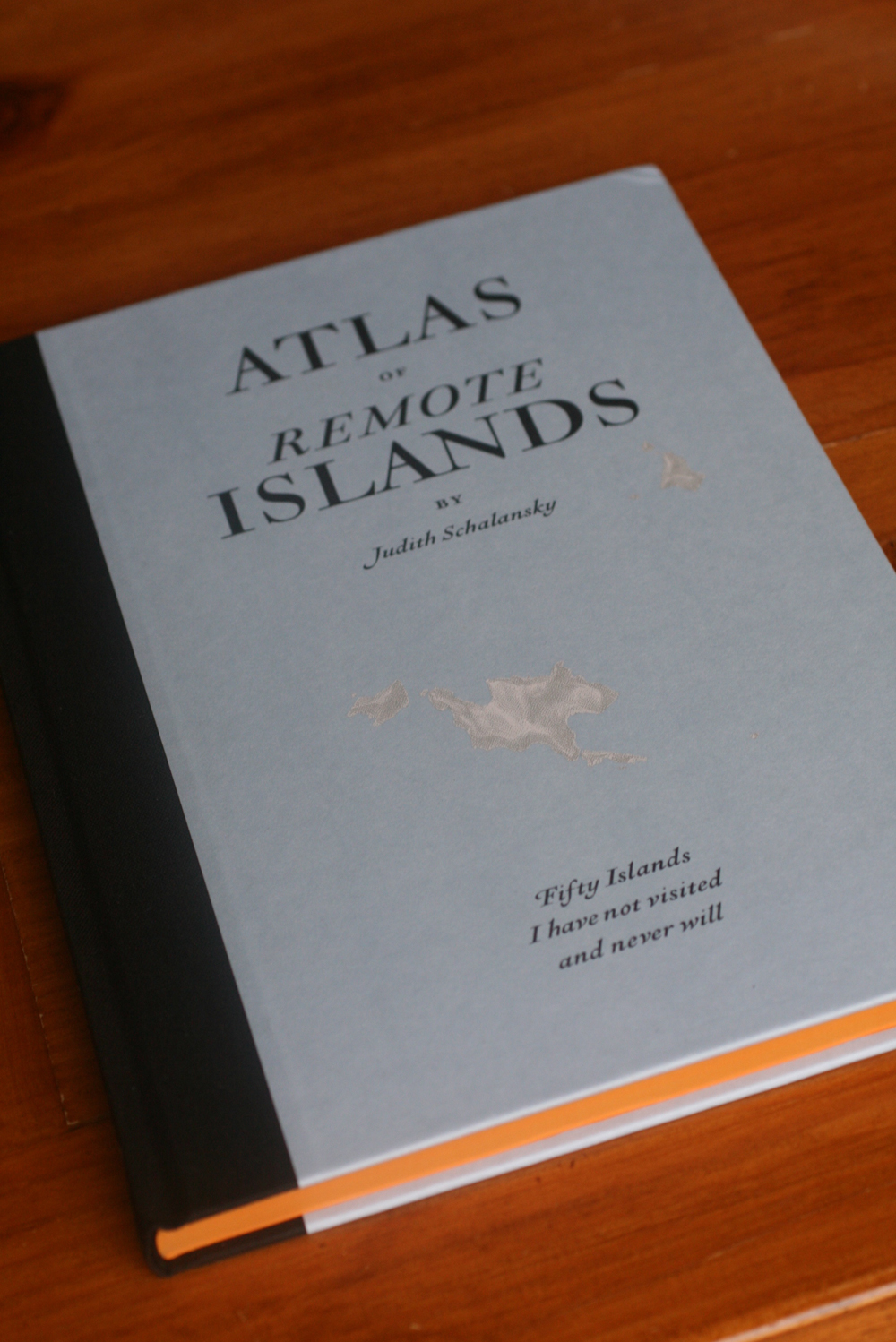From the archives, here’s Worm’s review of a beautiful, unusual book…
Typographer and book designer Judith Schalansky grew up behind the Iron Curtain in 1980’s East Germany. Unable to travel beyond the borders of her own insular country, she spent her childhood poring over maps of unobtainably far off places,
“travelling through the atlas by finger . . . conquering distant worlds in my parents’ sitting room.”
Schalansky’s book An Atlas of Remote Islands: Fifty Islands I Have Not Visited and Never Will was released to great acclaim in the autumn (winning ‘Germany’s Most Beautiful Book’ prize on its release – and you can see why, it’s a gorgeous thing). The book contains short stories, some factual, some more fanciful, laid out with oddly haunting line drawings of the islands themselves on each opposite page, inviting you to cast yourself into that faraway place with your imagination. It makes for perfect bedtime reading. Schalansky writes in her introduction:
‘The absurdity of reality is lost on the large land masses, but on islands, it is writ large. An island offers a stage: everything that happens on it is practically forced to turn into a story, into a chamber piece in the middle of nowhere, into the stuff of literature.’
Islands are seductive because their tiny size and physical isolation makes them blank canvasses for our own dreams. We know that we can’t change the world or a continent, but just maybe an island is small enough to be moulded into our own personal arcadia. Islands allow us to streamline our version of reality into the form most acceptable to our ego. That’s essentially what Desert Island Discs is all about. An ‘untouched’ island is even more alluring. One of the simple joys of the internet is being able to spend hours scrolling around Google Earth looking for obscure specks of land far out in the ocean and zooming in to see a nothing but a lonely rock. The flipside of the internet of course is that it has made the world so much smaller, meaning there’s very little out there that remains mysterious. But an island like Tristan de Cunha can only be reached on a mail ship twice a year and that’s it. So most of us are never ever going to go there. It will remain a lonely dot adrift in the fathomless blue, somewhere out there, existing, yet not existing – it is so remote that it becomes almost an abstract idea. We can’t make these islands closer or more hospitable or go there for a honeymoon. Isn’t that exciting in this day and age?
The irony of all this idealistic dreaming is that within a few pages of the book you realise that these far-flung microcosms are seldom the wished-for places of peace and plenty. Rather than being perfect communities, islands are frequently witness to the worst of mankind’s evils. Atomic bomb tests, loneliness, war, rape, cannabalism and starvation are recurring events on these blasted shores. Instead of freeing us of our mortal sins, islands can instead magnify them.
Every single page of The Atlas of Remote Islands is as individual and enchanting as the island it describes. Here is a typical passage, part of the entry for Rudolf Island, lost in the Arctic Ocean, far north of Siberia
The compass shows that they have crossed the 82nd parallel north, a further invisible line in the snow which the lieutenant records on his silent map. In the evening, they reach the edge of Crown Prince Land. What lies before them is not a navigable sea, but a gigantic open expanse surrounded by old ice. Mountainous clouds shimmer on the horizon. The lieutenant sketches flowing lines on the piece of paper one last time: Cape Felder, Cape Sherard Osborn and the southern tip of Petermann Land. They drive the Austro-Hungarian flag into the rocky ground and cast a bottle containing a message off a cliff ledge. Words frozen for future witnesses:
Cape Fligely, 12 April 1874, 82°, 5°, northernmost point. Thus far and no further.












Atlas of Remote Islands: A Book I Have Not Read and Now Will
If you’re thinking of visiting Tristan da Cunha, be warned. In “Fish, Flesh And Good Red Herring : A Gallimaufry” (2004), Alice Thomas Ellis wrote:
“[The vicar’s wife] has had bad luck with hens: she lived for a time on Tristan da Cunha and says there are few things more dispiriting than seeing your poultry being blown by the wind out over the Atlantic.”